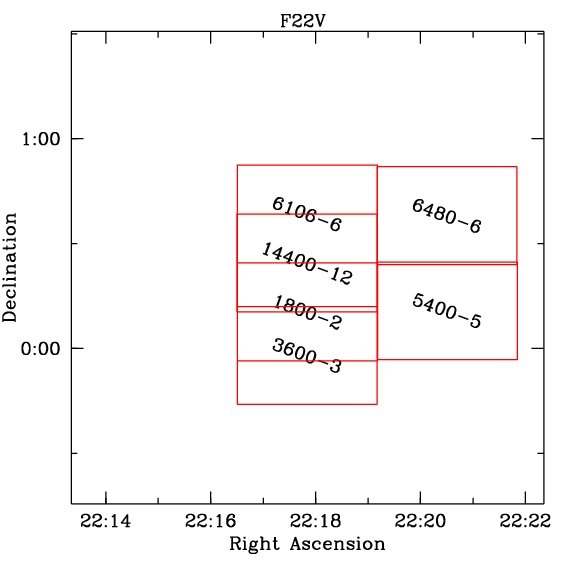
| Summary:
This page describes the F22V wide catalog. It gives: Preliminary notes:
|
| The figure at right shows the coverage F22V coverage. Each box shows the nominal position of the CFH12K exposures. In each box are two numbers, separated by a hyphen. The first shows the total exposure time, the second the total number of exposures. |  |
Description of catalogs:The relevant files:Some of these files (for reasons of convenience) are available as links from this page. Others are only available on the VIRMOS disk.
Sky area:A rectangle between:
Only the eastern border is the same as the F22I. With allowances for the masked areas, the total area is: 1.137 square degrees. Masking:The following areas were masked:
|
| The figure at right shows the layout of the
masks in the file F22V.box.
The boundaries of the field are shown in red. |
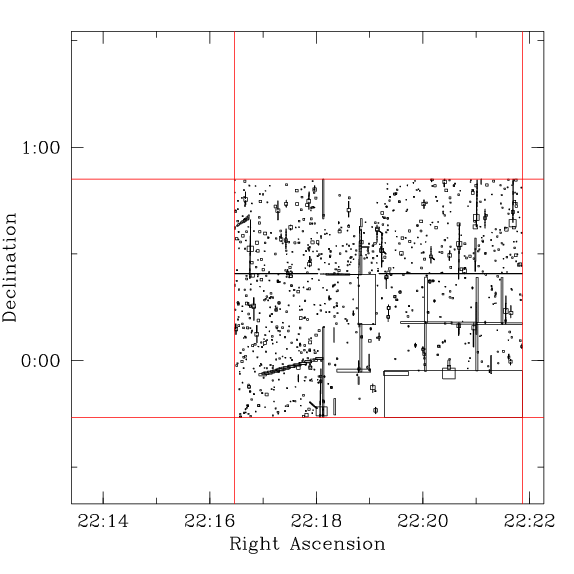 |
Notes on reduction procedures:This section provides a brief reference for the data reduction procedure.
|
| The figure at right shows the layout of the observations.
They are labelled as follows:
oct003p09
Note that the outlines of the observations are determined directly the astrometrically calibrated data frames. There are no apparent gaps in the coverage. |
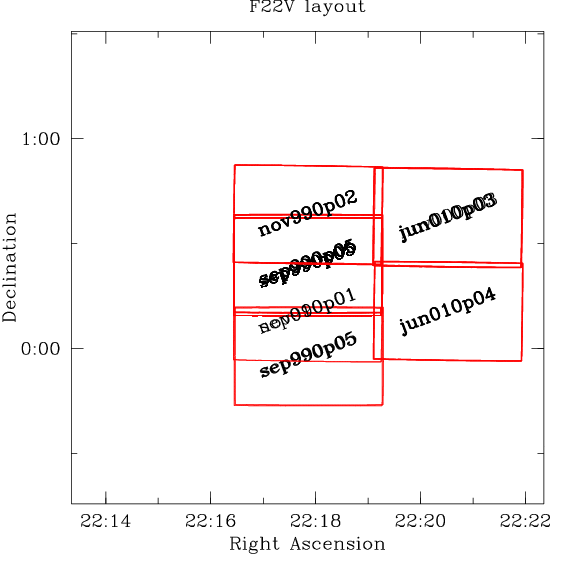 |
 The figure at right shows how the photometric calibration was done. Lower left: layout of the 22hr pointings, outlined in red and labelled in black. Upper left: layout of the 22hr pointings. Photometric exposures are
in heavy black and labelled "0". Exposures that "touch" (more than 150
common objects) photometric exposures are in red and labelled "1". Exposures
that "touch" level 1 exposures are
Big right panel: For every exposure, a zero-point was calculated under the (usually erroneous) assumption that it was taken under photometric conditions. This zero-point was calculated using using the airmass and exposure time from the header and the zero-point for the run. This zero-point is known as the "nominal" or "original" zero-point. Some exposures were flagged as being genuinely photometric. These ones are shown in black. For each photometric exposure, zero-points for all the other exposures by comparing magnitudes in the overlap regions. The difference between this "calculated" zero-point and the "nominal" one is plotted along the x-axis. The exposures are labelled by number on the left and by the UTC date and HST time are shown on the right. The colour-coding is the same as the upper left panel: black for directly photometric, red for 1 step removed and blue for 2 steps removed. The final zero-point for each exposure is the average of the all the "calculated" zero-points for that exposure. |
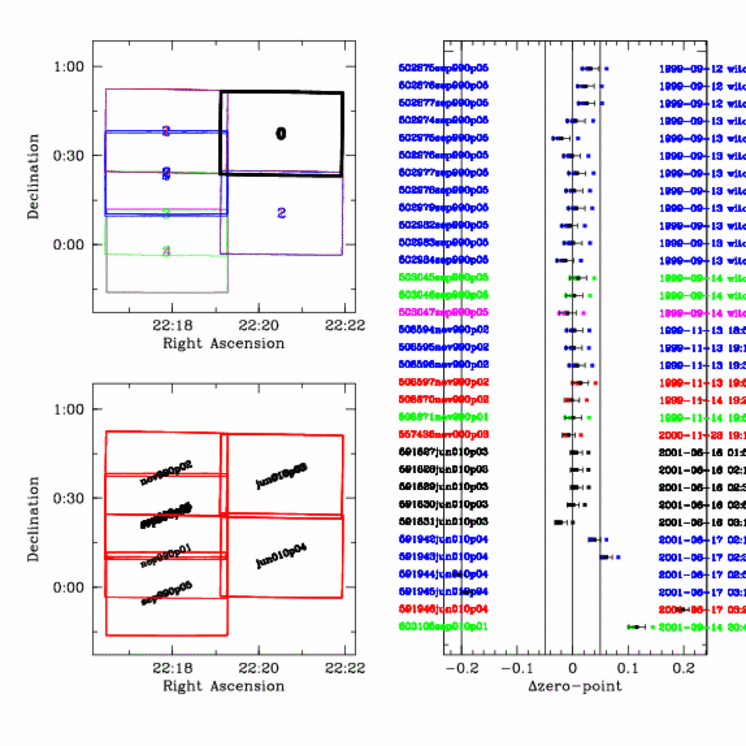 |
| Data tests: |
| The figure at right shows the I band galaxy number counts for the F22V together with some data from the literature. The limiting magnitude appears to be VAB=24 | 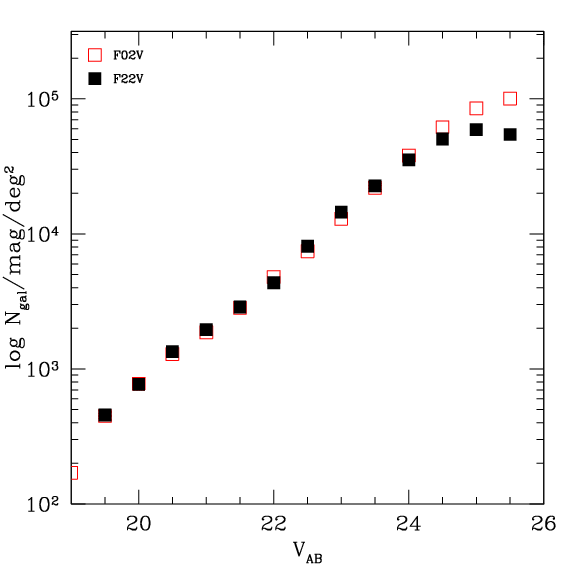 |